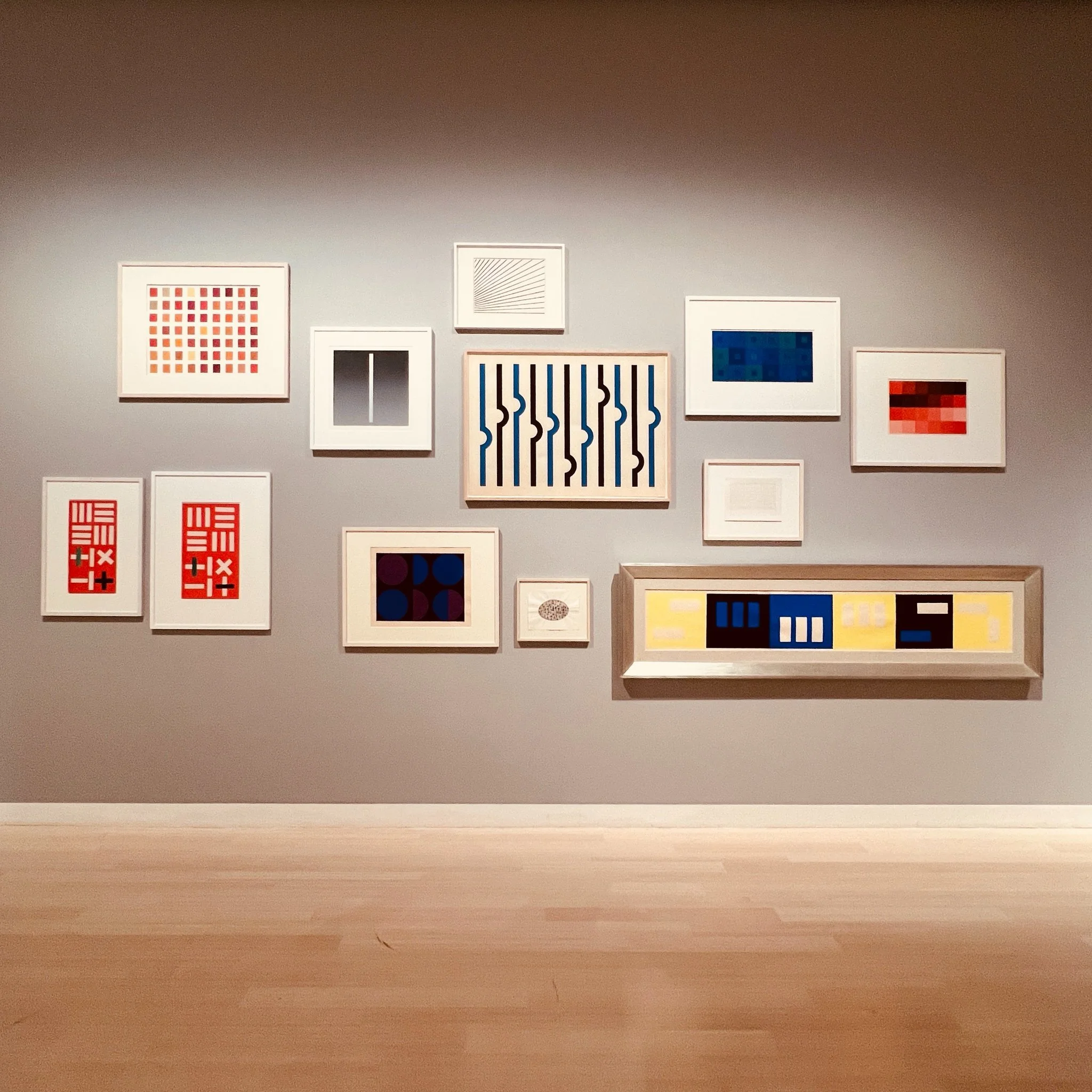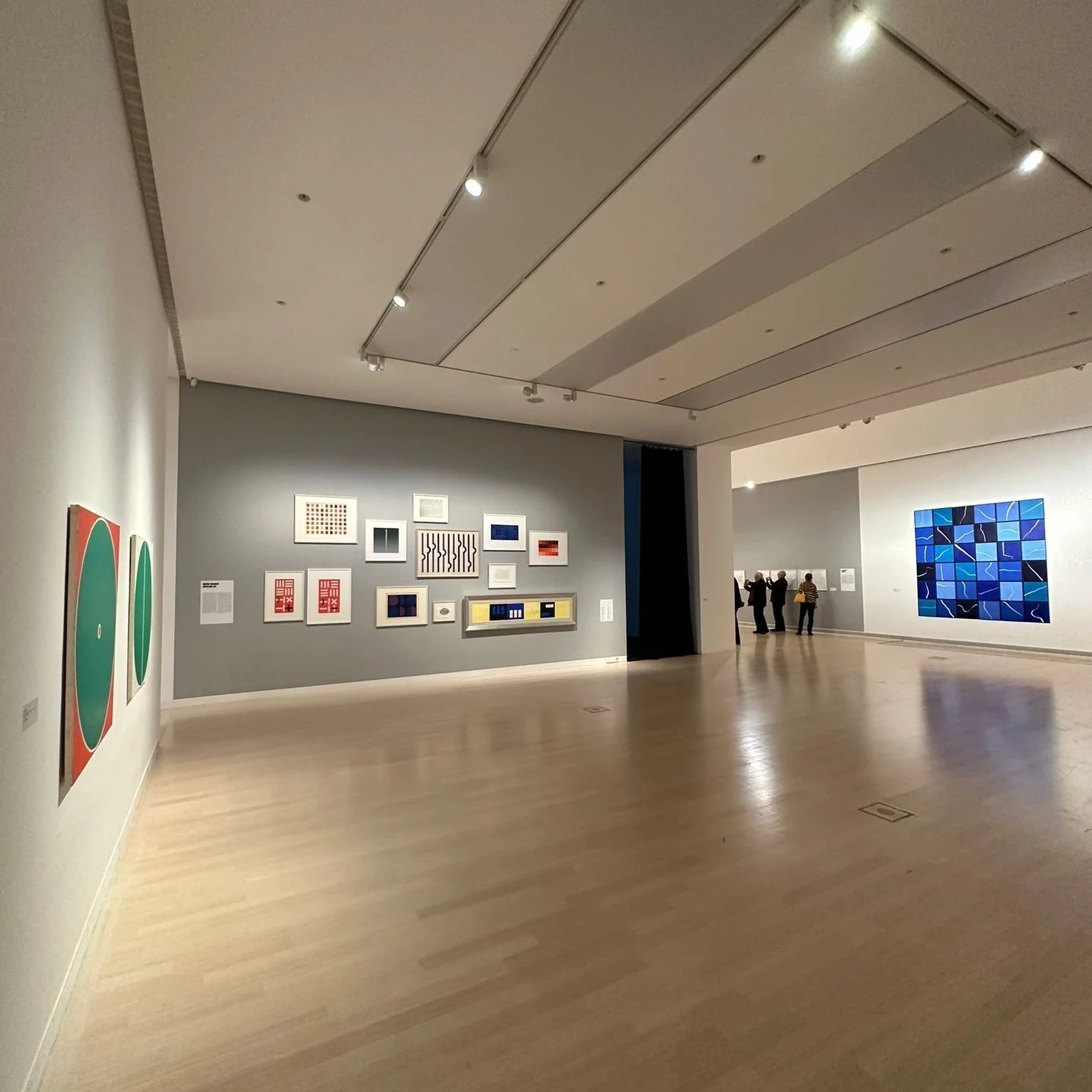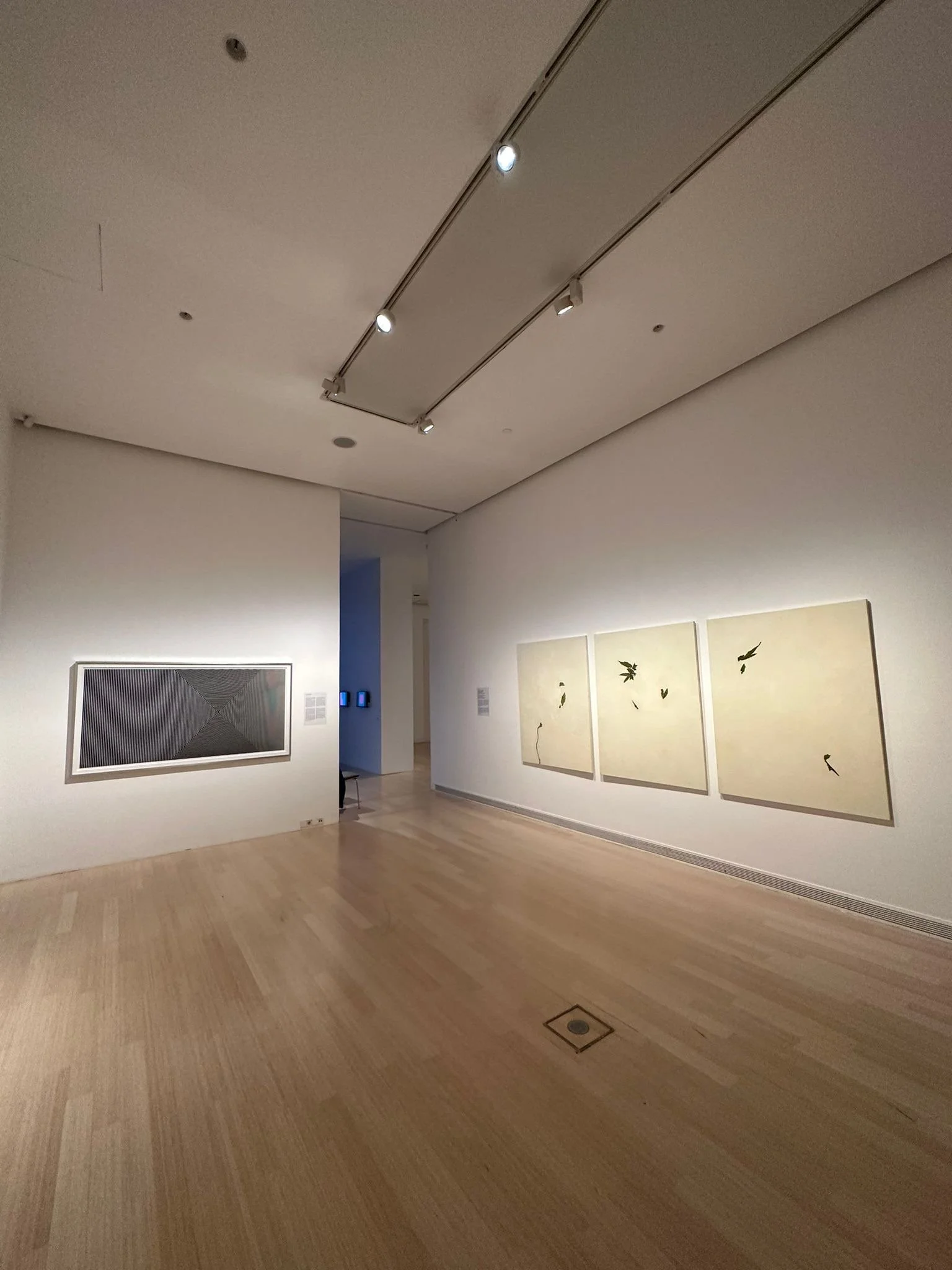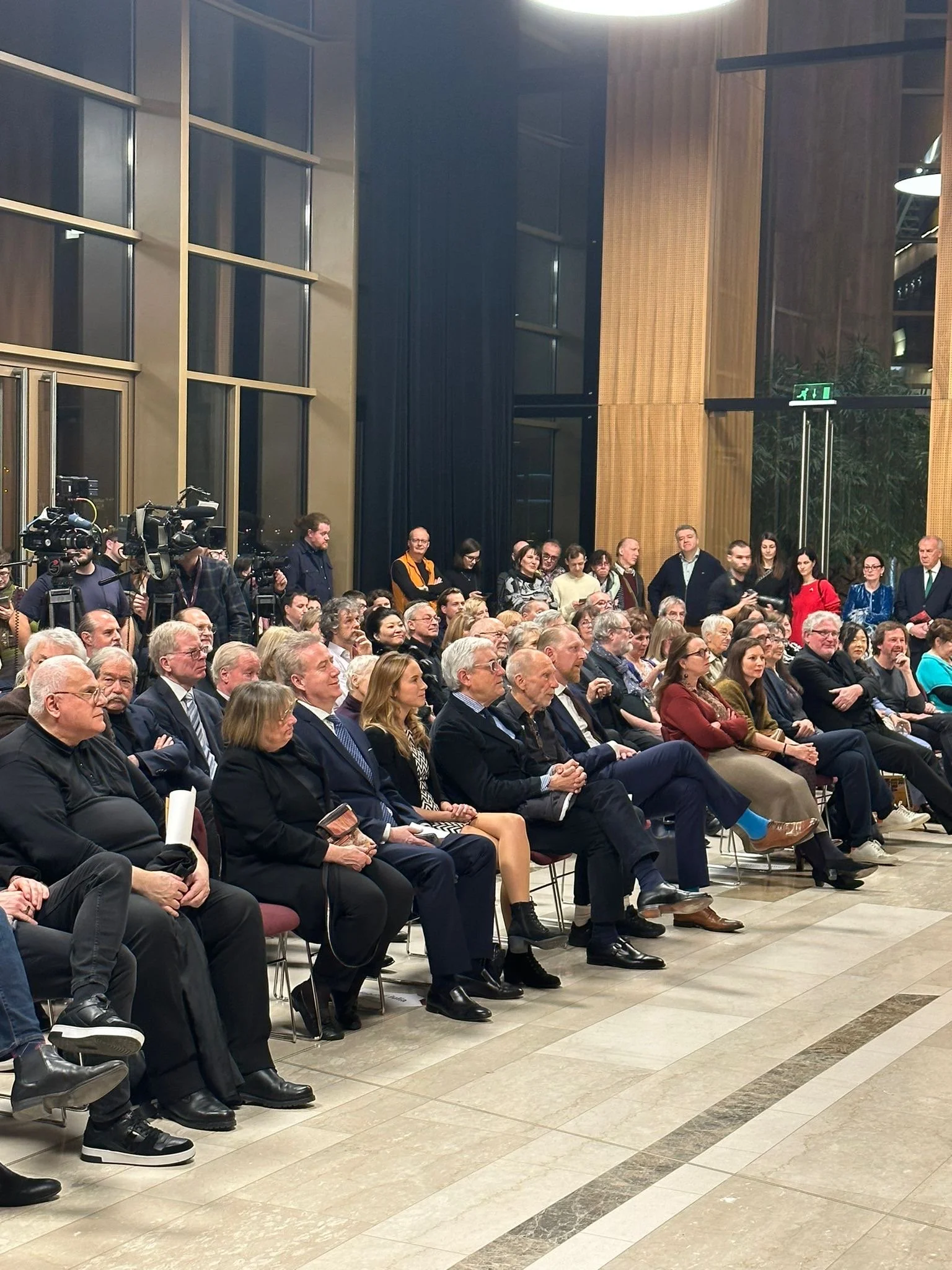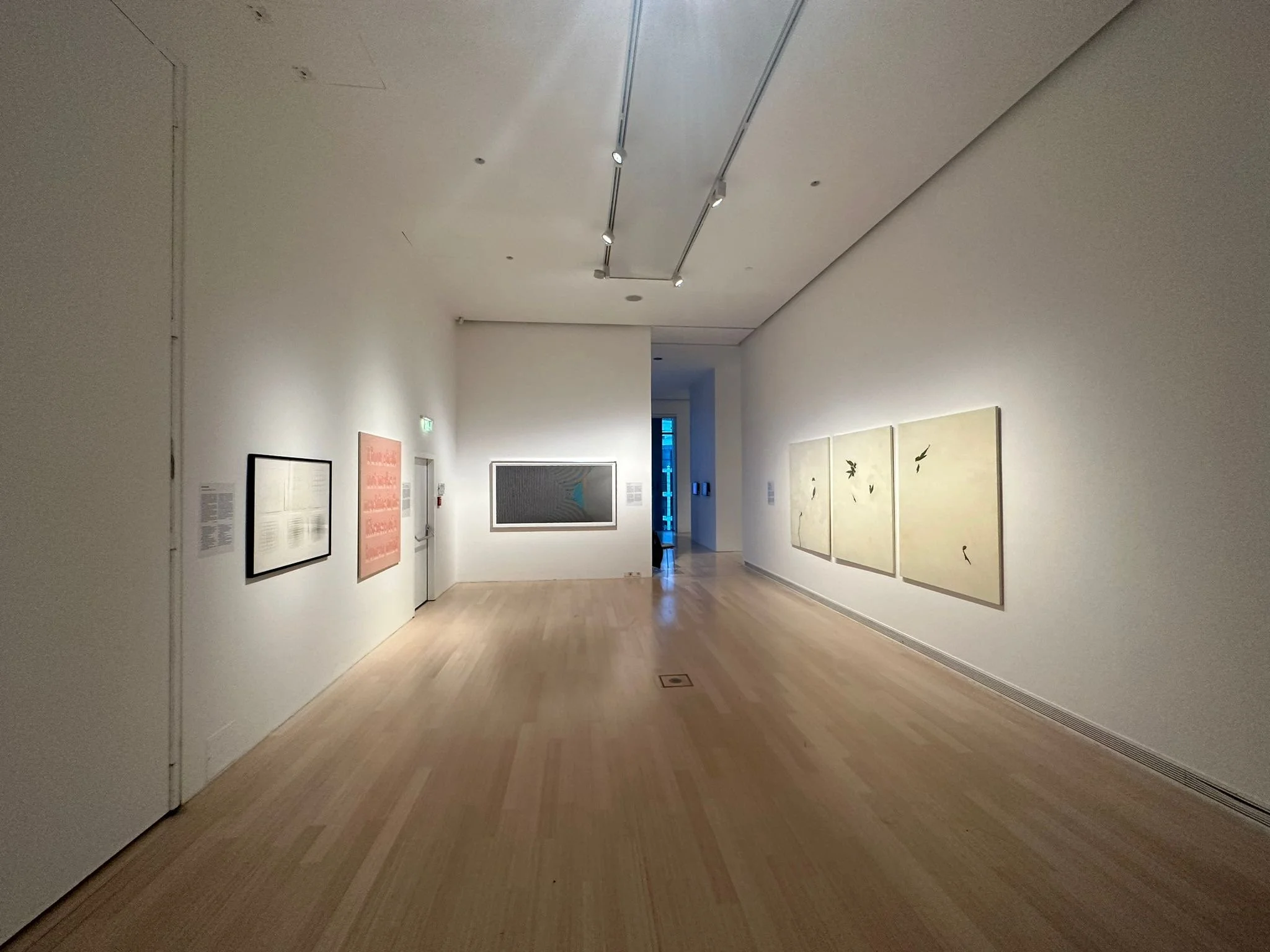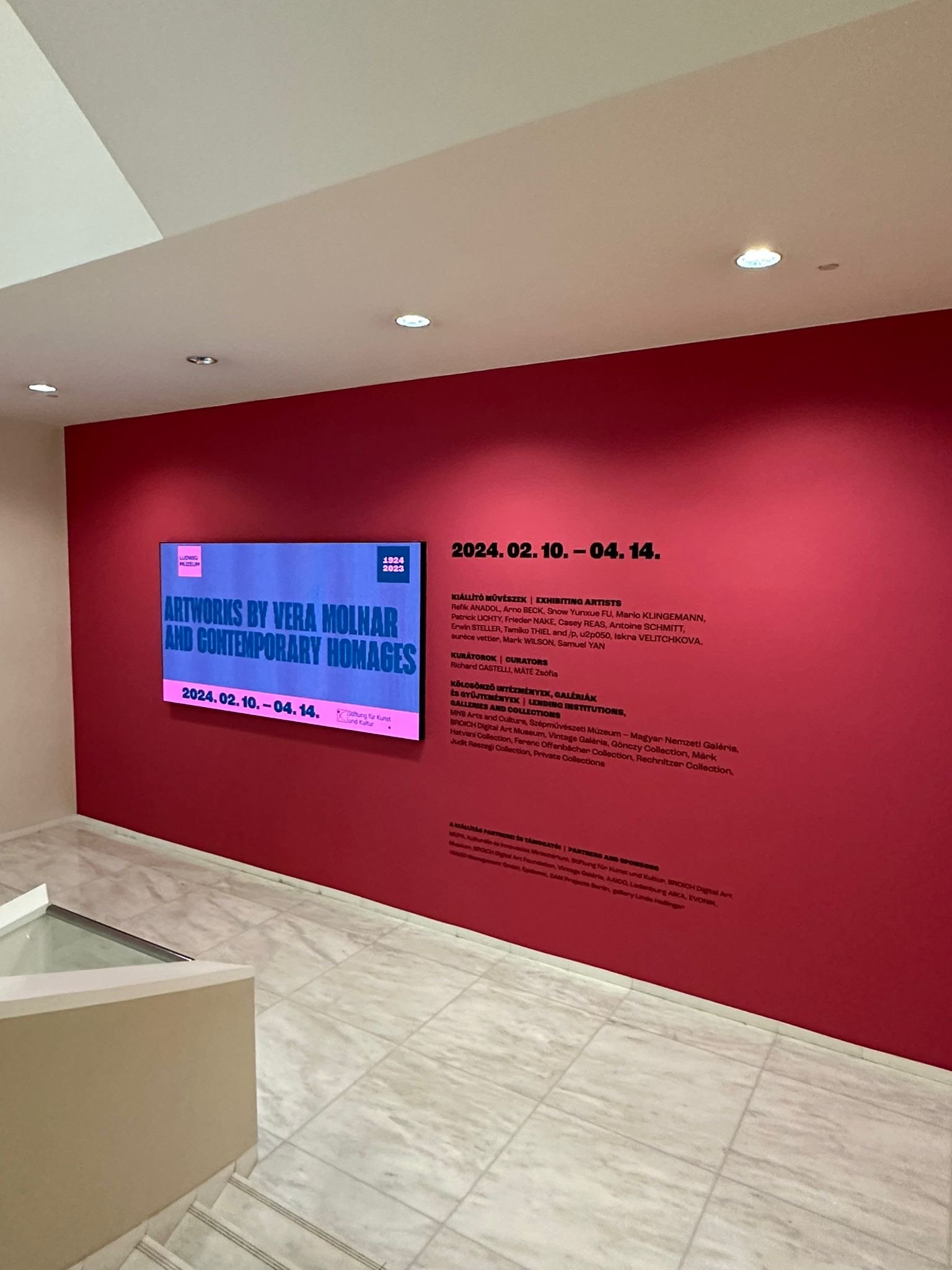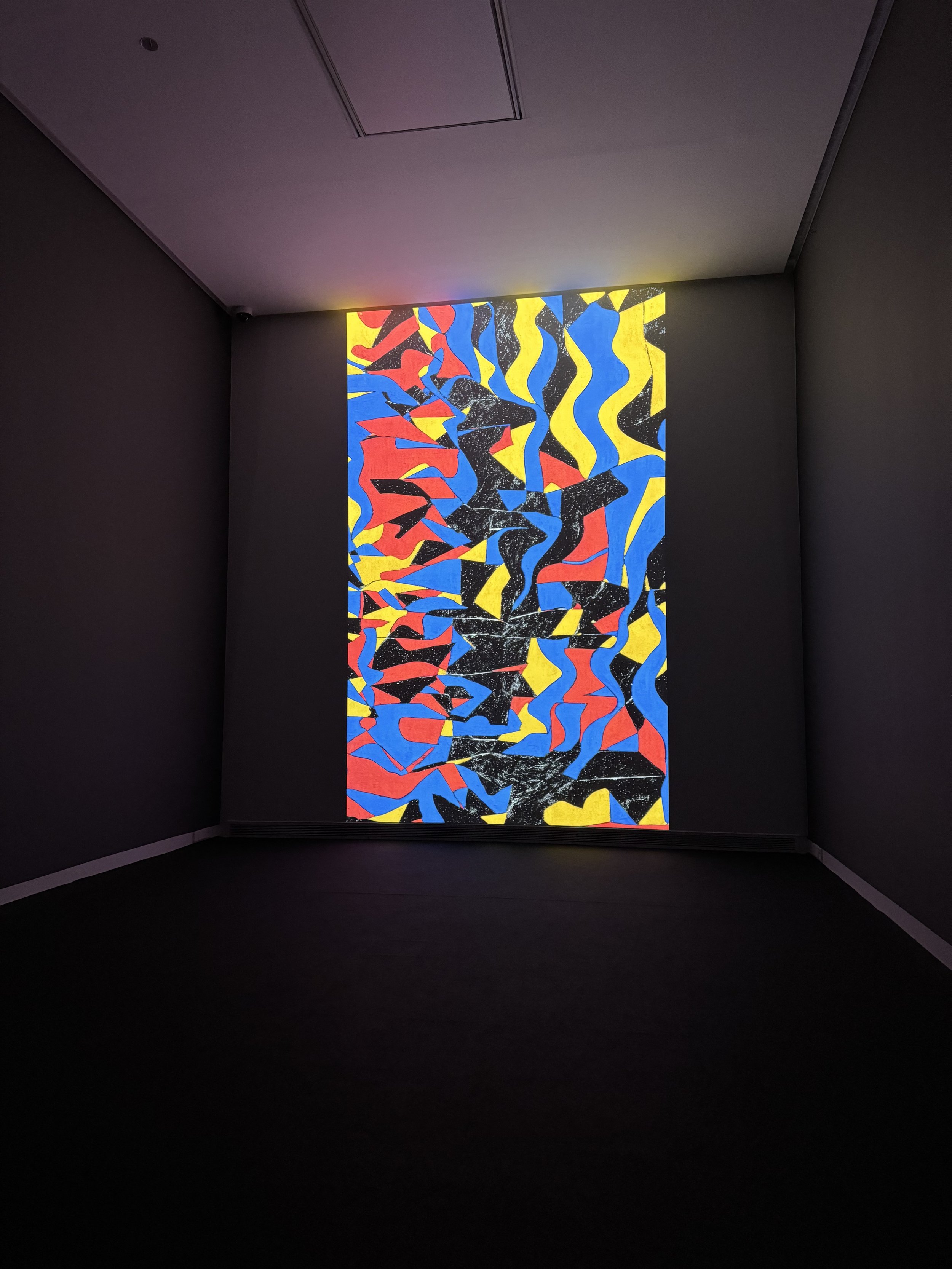À LA RECHERCHE DE VERA MOLNAR – Exhibition of Vera molnár in Ludwig Museum, Budapest
We're excited to share that the Ludwig Museum is organizing a special exhibition showcasing the work of Vera Molnár, one of the pioneers of generative art. This comprehensive exhibition of her oeuvre will be held in her hometown, Budapest, opening on the 10th of February and running until the 14th of April, 2024. Apart from Vera Molnár's artworks, the exhibit will also showcase pieces from internationally acclaimed artists who were influenced by this pioneer. We're proud to share that among the artists exhibiting, several are also represented by our gallery, including Mario Klingemann and Iskra Velitchkova.
The exhibition of ‘À la recherche de Vera Molnar’ at Ludwig Museum, Budapest © Photo: Kate Vass Galerie
The Ludwig Museum’s exhibition titled À la recherche de Vera Molnar pays tribute to the artistic legacy of Vera Molnar, who passed away shortly before her 100th birthday. Born in Hungary and educated at the Hungarian Academy of Fine Arts, Molnar lived and created in France from 1947 until her death. From 1968, she was among the first to create artworks using a real computer, and she is still widely regarded as one of the most significant pioneers of computer art.
The exhibition’s title refers to Vera Molnar’s series À la recherche de Paul Klee, recalling the artist’s experiments in examining art historical influences through her own creative methods and tools. Similar to the narrator of Marcel Proust’s novel sequence À la recherche du temps perdu (In Search of Lost Time), Molnar was interested not only in the mere recall of the past but also in its reinterpretation in the context of the present.
The exhibition of ‘À la recherche de Vera Molnar’ at Ludwig Museum, Budapest. © Photo: Kate Vass Galerie
Following this spirit, the two-part exhibition at the Ludwig Museum provides an overview of pivotal chapters in Vera Molnar’s career. Displaying unique and reproduced graphic series and paintings, the exhibition spans from the late 1960s to the present day, presenting the most significant themes and art groups of this unique body of work, tracing the transformations in Molnar’s line and form systems.
Vera Molnar’s works are based on programmed algorithms, constructed from basic geometrical forms. In the beginning, she experimented with quite simple algorithms. Her series works arise from small variations of the basic elements, adding what the artist calls “1% disorder.” Discovery and randomness played a significant role in her working method. For Molnar, the randomness generated by the computer revealed the horizon of possibilities, but the decision and choice always remained in the hands of the artist. Balancing on the border between order and disorder, her compositions combine the geometric formal language with playfulness and a personal, unique sensitivity.
The other part of the exhibition introduces, for the first time worldwide, a special international group exhibition featuring works and unique reflections by invited internationally acknowledged artists. This section pays homage to Molnar’s legacy, and examines her impact on contemporary art.
The exhibition is realized through the collaboration of the Ludwig Museum, the Foundation of Art and Culture (Stiftung für Kunst und Kultur), and the Vintage Gallery.
Exhibiting Artists: Refik ANADOL, Arno BECK, Snow Yunxue FU, Mario KLINGEMANN, Patrick LICHTY, Frieder NAKE, Casey REAS, Antoine SCHMITT, Erwin STELLER, Tamiko THIEL and /p, u2p050, Iskra VELITCHKOVA, aurèce vettier, Mark WILSON, Samuel YAN
The exhibition of ‘À la recherche de Vera Molnar’ at Ludwig Museum, Budapest. © Photo: Kate Vass Galerie
LOCATION:
Ludwig Museum
Komor Marcell u. 1
1095, Budapest.
Hungary
TIME:
10. February, 2024 – 14. April
VISIT THE WEBSITE:
https://www.ludwigmuseum.hu/en/exhibition/la-recherche-de-vera-molnar-artworks-vera-molnar-and-homages-internationally-acclaimed
Works by Iskra VELITCHKOVA and aurèce vettier at the exhibition, À la recherche de Vera Molnar’ at Ludwig Museum, Budapest. © Photo: Kate Vass Galerie
VERA MOLNÁR
Born in Hungary in 1924, Vera Molnar is one of the first women artists to use computers in her practice. Molnár completed her art studies in her hometown before moving to Paris. Her early artistic endeavors focused on traditional mediums, particularly abstract painting, where she demonstrated a keen interest in geometric forms and systematic art. A key milestone in Molnár's career was co-founding the "Groupe de recherche d’art visuel" (GRAV), an influential collective dedicated to exploring visual arts through research and collaboration. The group, active in the 1960s, was instrumental in investigating new artistic expressions and contributed significantly to the development of kinetic and op art.
In the late 1960s, Molnár embraced the world of digital technology, learning early programming languages such as Fortran and Basic. This marked the beginning of her groundbreaking work in computer-generated drawings, using a plotter to bring her digital creations to life. Her work often involved algorithmic procedures to generate geometric shapes and patterns, highlighting the delicate balance between order and chaos.
One of her key contributions to the field was the development of the "1% deviation" theory. This concept explores the idea that a minimal change of just 1% can dramatically alter the aesthetic qualities of a piece, challenging the boundaries between rule-based systems and artistic intuition.
Throughout her career, Molnár remained at the forefront of the computer art movement, establishing it as a legitimate artistic discipline. Her works are celebrated for their mathematical precision, aesthetic simplicity, and innovative use of technology.
In 2019 Kate Vass Galerie exhibited one of her works, Java von 12 Quadraten, 1974 by Vera Molnàr (Plotterzeichnung, 60 x 42 cm , Unique). The piece was part of the extensive group show Automat und Mensch. The exhibition was, above all, an opportunity to put important work by generative artists spanning the last 70 years into context by showing it in a single location.

